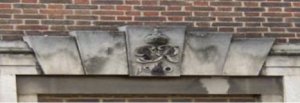Winchester calling - TrustNews March 2008
In January six members of the Trust's Trustees visited Winchester Telephone Exchange. It started in 1940, which date and "G VI R" appears above one of the windows in Upper Brook Street. Was it built as part of the war effort to improve communications? Conveniently the location was behind the Winchester General Post Office which used to be in Parchment Street. The building was extended in the 1950s and again in the early 1980s, the later extension being on land owned by local wine merchants, Keith Bros, who insisted their shop (now Threshers) be included in the redevelopment.

The exchange is no longer owned by BT who transferred all their property portfolio to an investment and services company, Telereal, in 2003. A BT subsidiary, Openreach, maintains the exchange and undertakes installation work for BT and for all other companies who can now use the exchange such as Tiscali, TalkTalk etc.
Perhaps not surprisingly given the fast-changing technology, there is a good deal of semi-redundant equipment and the work of disentangling the old from the new is obviously complex and very expensive to do. Several areas have been cleared leaving a fair amount of empty space available for the next generations of equipment.
All phone lines in Winchester connect to the exchange with their own unique pair of copper wires. However we were surprised to learn that all calls are then routed to Southampton by fibre optic cables where they are processed to connect them to the receiving number, so if you call your neighbour in Winchester your call is not processed in Winchester - much like your post it is processed in Southampton! The exchange also connects private company lines, for example lines between separate offices in the city, and secure lines such as bank transactions, Ministry of Defence etc.

Broadband equipment is now an important part of the exchange and much of this belongs to a range of ISP suppliers. The broadband connection is the first connection to a line which is why if there is a problem with your broadband your phone probably goes dead too.
There are hundreds of miles of wires within the exchange. How anyone can work out where they all go is a mystery! The system is backed up with batteries and a generator in case of power failure. Here the space saving of modern equipment is especially obvious with two large battery rooms made redundant, replaced by much smaller batteries within each bank of equipment.
All the major mobile phone companies have transmitters on the roof of the exchange with their own equipment rooms below.
Could the exchange be moved and redeveloped? When you see the complexity of the installations you begin to realise the enormity of the task. Is the building bigger than needed? Probably - but who knows what the next requirement for communication will be? What is certain is that there will be a constant renewal of equipment and plenty of space is needed to make changes while keeping the current systems working.
Our thanks to Chris Hall who showed us round and answered our many questions.
